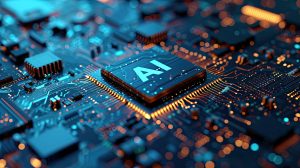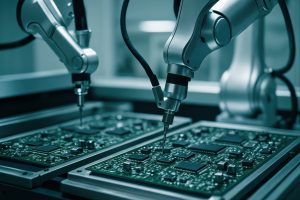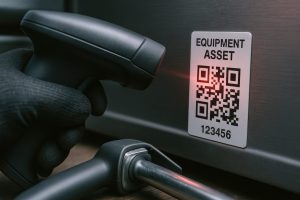Will AI Replace Barcodes?
 After more than 50 years, barcodes are still relevant and viable. The demise of barcodes was predicted almost from the start.
After more than 50 years, barcodes are still relevant and viable. The demise of barcodes was predicted almost from the start.
The first threat was RFID, the next was digital watermarking. RFID never replaced barcodes for numerous reasons, but RFID and barcodes work well together, which has undoubtedly contributed to the longevity of both technologies.
The AI Threat
Now, at least in the minds of some people, the next threat to barcodes might be AI. The reasoning is based on the ability of AI to identify products, such as distinguishing an apple from an orange. While this is mostly true, it still doesn’t accomplish what a barcode does: distinguish Fuji apples from Honeycrisp apples, and individual apples from those of different farms, picked on different dates. Yes, barcodes can do that, and the next evolution of barcodes with GS1’s “Sunrise 2027” will make it even better.
Just as RFID didn’t replace barcodes, but rather the two technologies are used to work together, a similar evolution is already underway with AI and barcodes. AI will not replace barcodes, but it is transforming the way they are used. Barcodes are foundational for cost-effective automatic identification and tracking. AI enhances barcode functionality with smart scanning, advanced analytics, and IoT integration.
Smart Scanning
Scanner manufacturers are utilizing AI to facilitate the decoding of poorly printed barcodes and those that have been damaged during package handling. There is a limit to how much AI can do to accurately recover data from these barcodes, but AI is significantly enhancing barcode scanning.
AI-Enhanced Barcoding
The relationship between barcodes and AI is symbiotic. Although AI can assist in barcode scanning, its real power is in analyzing the captured data. Each does what it does best. Barcodes provide the data. AI enables broader and deeper analytics. Inventory gets smarter with AI predictions, optimized stock levels, and reduced waste.
IoT
 Assets can be cheaply identified with barcodes. Expensive IoT sensors can be added on a scaled basis, starting with expensive or mission-critical assets first, and then other assets later. Data based on usage frequency or other factors enhances the accuracy of maintenance planning, failure prediction and end-of-service-life replacement.
Assets can be cheaply identified with barcodes. Expensive IoT sensors can be added on a scaled basis, starting with expensive or mission-critical assets first, and then other assets later. Data based on usage frequency or other factors enhances the accuracy of maintenance planning, failure prediction and end-of-service-life replacement.
Barcodes capture usage history. AI applied to the data makes more accurate future demand predictions, enabling intelligent additional asset acquisition. Similarly, weight and proximity sensors on smart shelves detect stock changes linked to barcode scanning data.
Will AI replace barcodes? In manufacturing, supply chains, retail, and asset tracking, without barcodes, there is no AI.
 Contact us here with comments and questions, or to schedule a free 30-minute consultation.
Contact us here with comments and questions, or to schedule a free 30-minute consultation.




